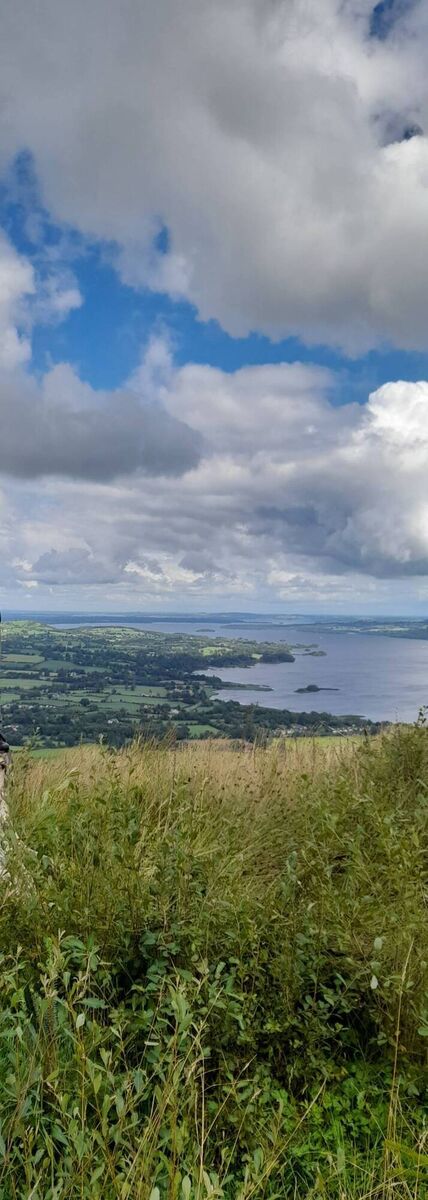Michelle McKeown: Why are Ireland’s clouds so thick? And did they influence our skin?

Sunlight through clouds over a west Cork beach.
Ireland has a cloud problem... or depending on how you see it, a cloud personality.
From Cork to Belfast, our skies are rarely clear. Thick, grey, and ever-present, cloud cover is part of daily life, more consistent than the weather forecast and more reliable than the bus timetable.
But what makes Ireland so persistently overcast? And could this brooding canopy above have played a role in shaping our famously fair complexions?
This isn’t just idle weather chat. There’s serious science behind Ireland’s famously gloomy skies, and compelling evidence that they’ve shaped not just our landscape, but our biology. From Atlantic winds to vitamin D, here’s the story behind Ireland’s clouds, and how it might have helped shape a nation of fair-skinned (and something sunburnt) faces.

Ireland sits on Europe’s northwestern fringe, cradled by ocean currents and hugged by humid air. It’s at the frontline for oceanic weather patterns, perched between 51° and 55° north, and smack in the path of westerly winds that ferry moisture across the Atlantic. The Gulf Stream, that great oceanic conveyor belt, keeps us mild and moist, cranking up our humidity to a misty 80–90% most days.
This means one thing: clouds. Thick ones. Persistent ones. Poetic ones. With more than 70% cloud cover throughout the year and anywhere from 150 to 225 rainy days.
Why so thick?
Two culprits: orographic lift and frontal systems. When wet air hits Ireland’s rugged western highlands (think Kerry’s MacGillycuddy’s Reeks or Donegal’s wild Errigal) it’s forced upwards. Up there, it cools and condenses, forming clouds you could almost lean on. Meanwhile, the jet stream steers warm and cold air masses into collisions, spawning low-pressure systems.
The result?
Clouds with heft. Clouds with staying power. Clouds on clouds, with more clouds.

So, while our skies are rarely empty, and when you start to pay attention, you’ll notice a familiar cast of cloud characters drifting along.
First up, are s; these are low, flat, and grey. They tend to spread across the sky and are the ones responsible for that ever-present mist or light drizzle, the kind of rain that seems to come from nowhere and soaks you all the same.
Next are the ; these are darker and heavier, with a more determined presence. These are the rainmakers. They are thick layers of moisture-laden air that bring steady, prolonged downpours. If you’ve ever stood at a bus stop in the Irish midlands, watching the rain come down in sheets, you’ve under a nimbostratus.
Floating between the gloom and the gaps are . These are low-level, patchy formations that sometimes break just enough to let you wonder if the sun might be lurking behind. But they rarely follow through on that promise, more tease than sunshine. We also have cumulus clouds, which are those puffy, bright forms that suggest fair weather. Classic clouds, the one you’d draw if I asked you to draw a cloud on a sheet of paper.
Finally, we sometimes get , which are rarer here in Ireland. These clouds are towering giants that unleash heavy rain and flashes of lightening, a rare but beautiful spectacle, if you’re safely indoors. So, in this rotating line-up, it’s the stratus and nimbostratus that dominate, lending Ireland its famously overcast look.

We’re not the absolute cloudiest corner of the globe but we’re close. Scotland’s west coast and the Pacific Northwest could argue their case. Weather stations in Belmullet and Valentia Island clock a modest 1,100 to 1,400 sunshine hours per year. That’s roughly three hours a day, if the sun’s in a good mood.
Unlike tropical climates with sharp sunbursts or arid regions where skies go on forever, Ireland opts for consistency. Our weather isn’t wild; it’s whispering. A climate of soft greys and muted blues.
Now for the juicy bit… could centuries of heavy cloud cover have nudged the evolution of our skin tone?
The link between cloud-heavy climates and lighter skin has a firm footing in evolutionary biology. Skin pigmentation is governed largely by melanin, which protects against UV radiation while still allowing us to synthesise vitamin D, crucial for strong bones and a healthy immune system.
With just 1,100-1,400 sunshine hours yearly, Ireland’s UVB is scarce, making vitamin D synthesis tricky. Over millennia, populations in low-light regions like Northern Europe often developed lighter skin, as seen in the spread of the SLC24A5 gene ~10,000 years ago.
In Ireland, 26% have very fair skin (type 1, burns easily) and 49.6% fair (type 2). Clouds likely nudged this adaptation, alongside European interbreeding. It’s a testament to how humans adapt to their skies, wherever they are.
So, next time you’re cursing the gloom on your commute to work or dodging puddles on your commute, pause and look up. That grey canopy is a quiet sculptor. It shapes our land, our light, and perhaps even our legacy. These clouds have softened our landscapes, inspired our poets and writers, and maybe even lightened our skin. They are, in their own soft way, beautiful.
And on the rare day when the sun breaks through, lighting up the mountains and our green fields and hedgerows, sparkling off our lakes and streams, warming your shoulders, it’s just wonderful isn’t it. And worth every drizzle.







